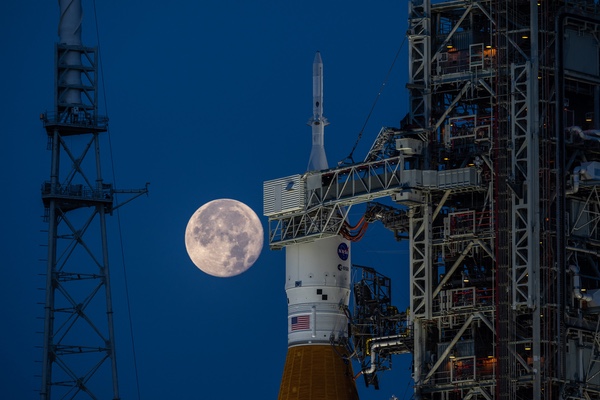Space and America’s futureby Frank Slazer
|
| If our nation is to achieve its bold vision for exploring space, we must boost funding for NASA. |
NASA is already tapping into private-sector commercial space investments to leverage its resources, while building on the international partnerships from the International Space Station. Already, Canada, Japan, and the European Space Agency have committed to be part of NASA’s exploration program. But NASA’s international partners have much smaller budgets, and NASA remains the largest customer for space exploration companies.
In other words, NASA still drives the pace of human space exploration efforts.
Yet what the National Research Council said in 2014 remains true: “The only pathways that successfully land humans on the surface of Mars require spending to rise above inflation for an extended period.”
Ironically, while NASA copes with fewer resources than before, the United States has become much more prosperous in the decades since the first Moon landings. In fact, the size of the US economy has more than doubled in just the past 20 years.
Looked at historically, NASA funding peaked in 1964 at the equivalent of about $35 billion in today’s dollars. Since then, our economy has nearly quadrupled in size. But NASA has fallen by roughly one-third in inflation-adjusted dollars.
As a result, our nation has continually had to scale back its ambitions for space exploration. Consider that NASA’s current long-term plan only allows for one lunar landing a year following Artemis 4, and these missions will last less than two weeks.
That approach fails to capitalize on the benefits of space exploration. NASA missions don’t just advance our understanding of the cosmos. They spur technological progress, demonstrate global leadership, promote national unity, and raise environmental awareness.
A more ambitious plan for NASA could increase those dividends. For example, there aren’t nearly enough Americans today pursuing careers in science, technology, engineering, mathematics, or advanced manufacturing. People of color and women are disproportionately underrepresented in these fields. Committing our country to inclusive space exploration will help inspire a diverse new generation of Americans to pursue careers in STEM that lead to good middle-class jobs.
| If NASA were funded to afford at least two lunar landing missions per year, it could more rapidly develop technologies for lunar surface exploration and much more. |
In addition to inspiring America’s next generation, consider our biggest geopolitical rival, China. As shown by its Belt and Road Initiative and other efforts, China is clearly focused on promoting its autocratic system’s superiority to the world. These efforts include space, where China has greatly expanded its capabilities. With at least three robotic lunar landings planned for this decade, China aims to be the world’s biggest space power by 2045. China also plans to bring Mars samples back to Earth two full years before NASA.
For decades, the United States led the world in human space exploration. Abdicating that leadership role to China could put US national security at risk, as there’s considerable overlap between space and defense technologies as well as their industrial base and workforce.
If NASA were funded to afford at least two lunar landing missions per year, it could more rapidly develop technologies for lunar surface exploration, better understand the long-term effects of the Moon’s partial gravity on astronauts, increase the effectiveness of its workforce, and move us much closer to putting Americans on Mars.
That would no doubt inspire future generations—and assure America’s continued leadership in space exploration.
The 9/11 attacks, the Great Recession, COVID-19, and other challenges have sapped two generations of our nation’s youth of the optimism for the future that long defined America. For that reason alone, America needs a bolder plan for NASA and space exploration now more than ever. Our nation needs to once again feel that our reach can exceed our grasp. More investment in NASA is an achievable, bipartisan way to reach a more hopeful future.
Note: we are using a new commenting system, which may require you to create a new account.
